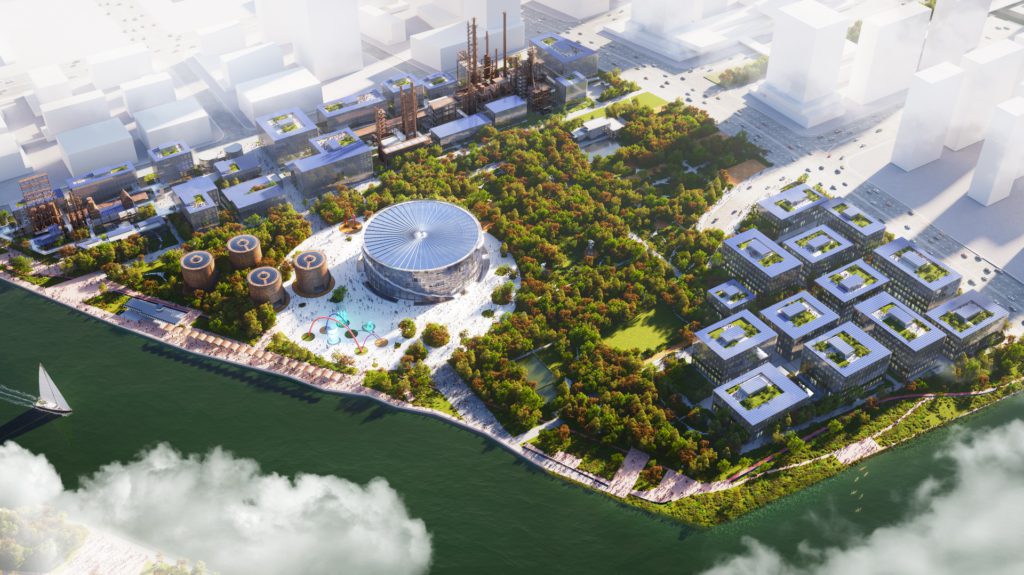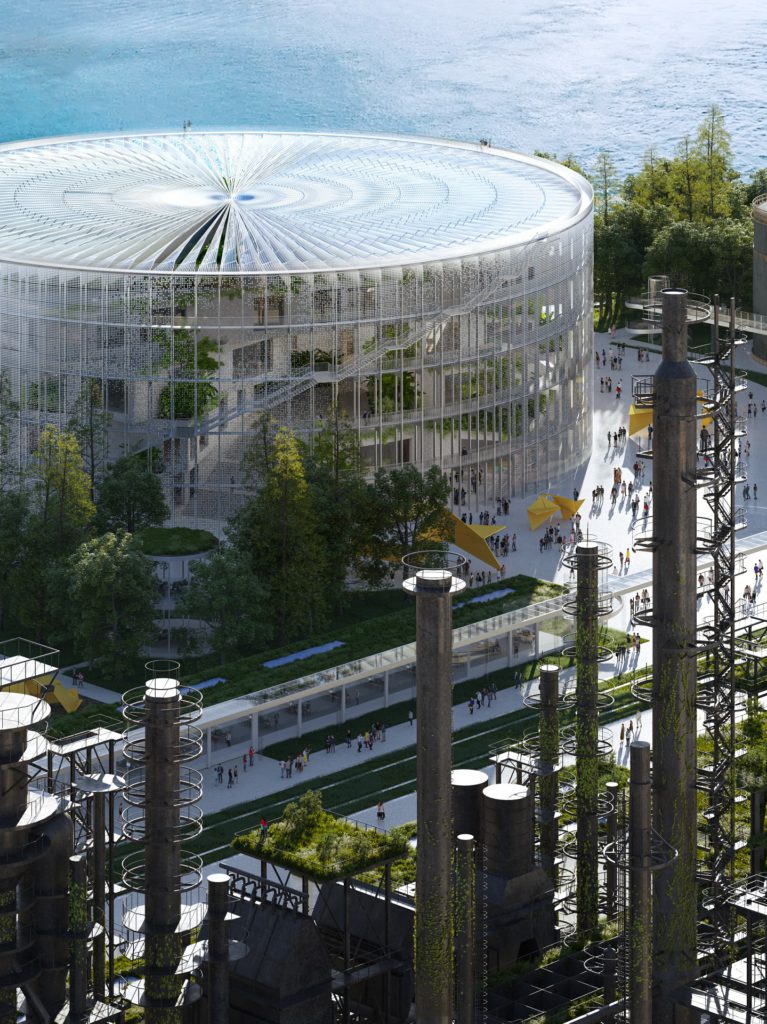Hangzhou Oil Refinery Factory Park: From ‘fossils’ to renewable energy
June 14, 2023
China’s Grand Canal—the world’s longest and one of the oldest artificial waterways—played a key role in strengthening connections between the country’s south and north areas. Positioned at the canal’s southern extent is the city of Hangzhou, with an 18-hectare site formerly occupied by an oil refinery. Since the factory’s closure, most of the structures had been demolished, but a number of large refinery buildings and oil storage drums remain.

“As a planet, we know we need to move on from oil on a massive scale”, said Winy Maas, MVRDV founding partner. “But that raises the question, what should we do with all this infrastructure that was created?”
To transform the former refinery, the competition-winning design by MVRDV in collaboration with Openfabric aims to fulfil the potential of industrial-to-cultural transformations. The design integrates renewable energy sources to exemplify transition from fossil fuels to sustainable energy.



A new art and science museum will serve as the centre, with offices, retail, and a variety of “cultural experiences” set in a public park. “We incorporate the old industrial structures, while newly built elements—which are clearly distinguishable from the old—show us a better, more sustainable future. The old ‘fossils’ turn into energetic drums”, said Maas.
Covered in an array of LEDs, the silo-shaped museum will serve as a media façade that also incorporates thousands of small photovoltaic (PV) spots to generate energy from sunlight. These spots will form a ‘solar painting’ that was designed with a parametric approach, taking into account the solar exposure, prevailing winds and notable views in order to place a higher density of PVs where they are needed.

The LED façades will also incorporate thousands of PV to generate electricity. Image © MIR
In the remainder of the park, existing structures will be transformed into offices or retail spaces. Many of the structures that have already been demolished will be recreated in a modern spirit with glass and PV spots. By turning every new building surface into an energy generator, the park is intended to become energy-negative in its operation, furthermore contributing energy to the local grid.
PROJECT DATA
Project Name
Hangzhou Oil Refinery Factory Park
Location
Hangzhou, China
Status
Competition winner
Client
Hangzhou Grand Canal Protection Development and Construction Group; Hangzhou Chenxiang Industrial Heritage Comprehensive Protection and Development Co. Ltd.
Size and Programme
17-hectare master plan (art and sci-tech centre; offices; retail; public park)
Architecture Firm
MVRDV
Founding Partner in Charge
Winy Maas
Partner
Wenchian Shi
Landscape Architect
Openfabric
Structural Engineer; Building Physics; Environmental Advisor
Buro Happold
Images
MVRDV; Engram; MIR
Read more projects below:
Day to night: Rejuvenating Clarke Quay with a Green rating update

Preserving culture and traces of time in Shajing Village Hall

A centre for sustainable ocean economy: Fornebu Brygge

To read the complete article, get your hardcopy at our online shop/newsstands/major bookstores; subscribe to FuturArc or download the FuturArc App to read the issues.

